The Baska Glagolitic Path on the island of Krk, part 2
http://www.croatia.org/crown/articles/9620/1/The-Baska-Glagolitic-Path-on-the-island-of-Krk-part-2.html
By Blandina Marković - Randić, dr.dent.med.
Published on 09/20/2008
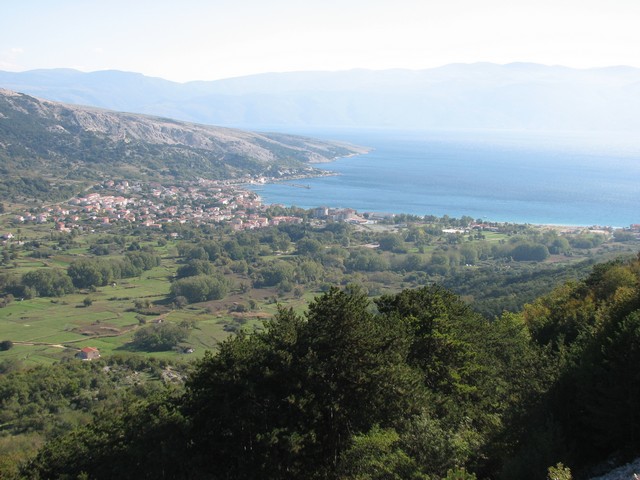
Excursion to the environs of the beautiful town of Baška on the island of Krk, with a spectacular view to the see, other islands and to the legendary Croatian mountain of Velebit.
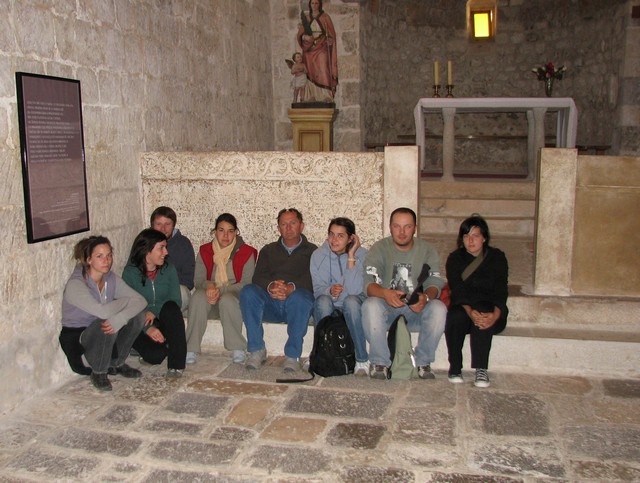
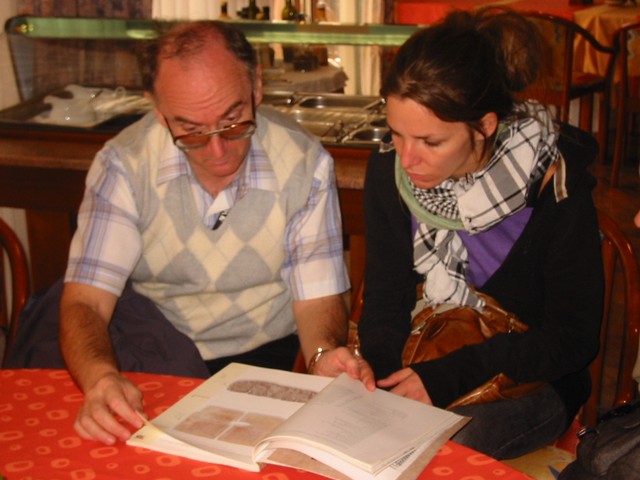


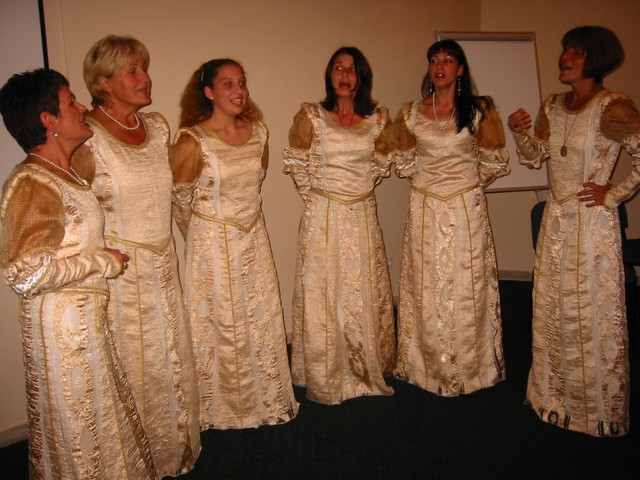

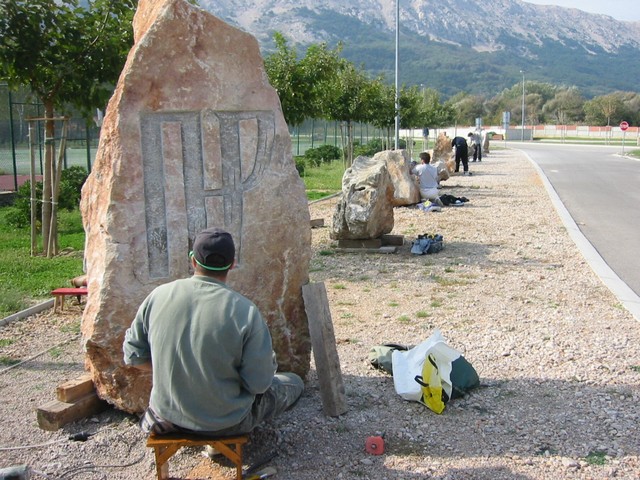
 | The Second International Workshop was devoted to the project of The Baška Glagolitic Path. It had participants from the Czech Republic, Austria and Croatia. Stone monuments have various cities as sponsor. For example, the stone representing the Glagolitic letter P is sponsored by Prague, capital of the Czech Republic. On the left is Erika Šimanić, Rijeka, carving the Glagolitic letter Ž. |
Participants from Czech Republic, Austria, and Croatia, page1

Excursion to the environs of the beautiful town of Baška on the island of Krk, with a spectacular view to the see, other islands and to the legendary Croatian mountain of Velebit.

Participants of the 2007 wokshop in front of the Baška Tablet from 1100. The workshop was organized by Sinjali society from Baška.
| Participants of the workshop were guided by Mr. Ljubo de Karina, Croatian sculptor from the town of Mošćenice. He sitting among young sculptors in the middle, in front of the Baška Tablet, one of the most famous Croatian Glagolitic monuments, dating from around the year 1100. It weighs about 800 kg, and has about 400 Croatian Glagolitic letters in 100 words. The most important is the second line which mentions ZVONIMIR KRAL HRVATSKI, that is, ZVONIMIR CROATIAN KING. See more about The Baška Tablet. Participants of the Second Workshop were students of Crafts and Arts at various Universities in Croatia and abroad: Jana Hoffmannová and Vojtěch Živný, Prag, Czech Republic Elizabeth Krenn, Nina Ollendorf, and Alessandro Lorenz, Graz, Austria Eduardo Filipović and Erika Šimanić, Rijeka, Croatia Tina Rade, Split, Croatia Vedrana Belanović and Roko Idžotić, Osijek, Croatia |

Darko Žubrinić with Elisabeth Krenn from Graz, Austria, discussing some basic facts concerning the history of Croatian Glagolitic Script.
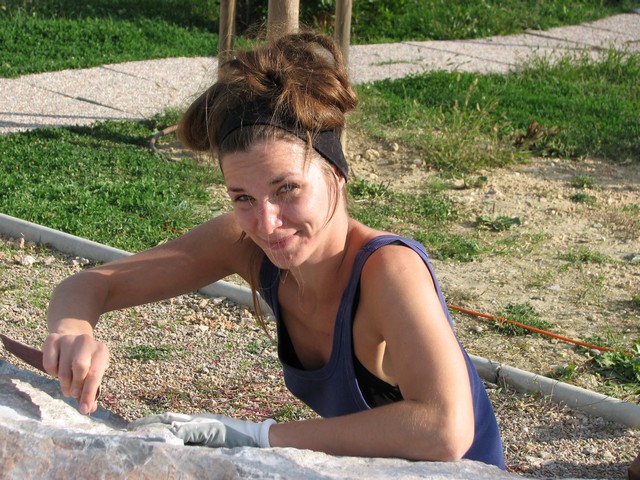

Elizabet Krenn, Austria, at work the next day, carving the Croatian Glagolitic letter G. It was a big surprise for her that some of the most beautiful Croatian Glagolitic books (for example the Novak Missal from 1368, the Roč Missal from around 1420, etc.), are kept in the National Library in Vienna, the former Royal Library, in the Department of Rare Books and Manuscripts. For more information see here.
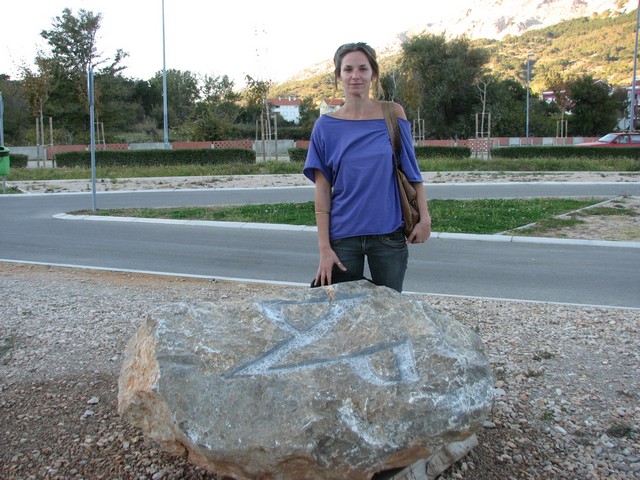
After several days of painstaking stone carving the result is here. Proud Mrs. Elizabet Krenn with her Croatian Glagolitic letter G being finished.
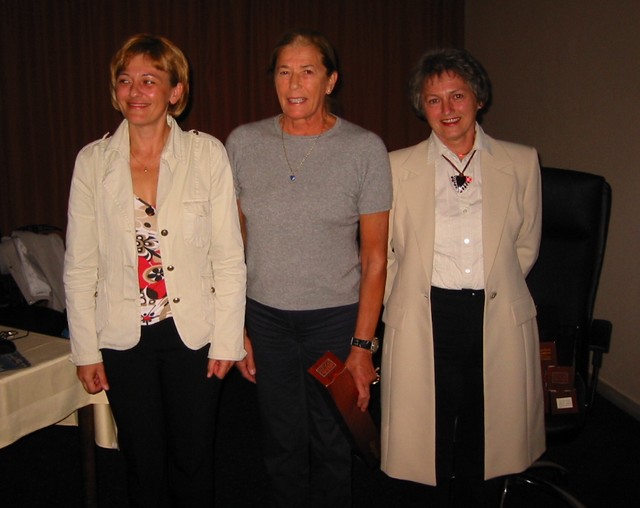

After several days of painstaking stone carving the result is here. Proud Mrs. Elizabet Krenn with her Croatian Glagolitic letter G being finished.

Two principal driving forces of the project of the Baška Glagolitic Path are Branka Polonijo, dipl.oecc., president of the Sinjali society, on the left, and Blandina Marković, dr.dent.med., on the right. In the middle Vesna Kovačić Tironi, artistic photographer.

Mr. Ljubo de Karina with his stone where he carved Sinjali and S in Croatian Glagolitic Script.
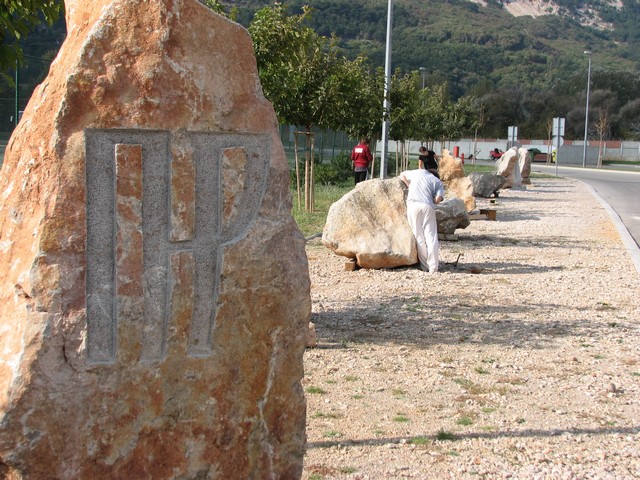
Croatian Glagolitic letter Đ (Đerv), carved by Mr. Eduardo Filipović from the city of Rijeka, Croatia. Sponsor of this monument is the town of Đakovo from Croatian North-East.

Roko Idžotić from Osijek carved Croatian Glagoliti Š. The letter enterd from the Glagolitic also into the Cyrillic Script.
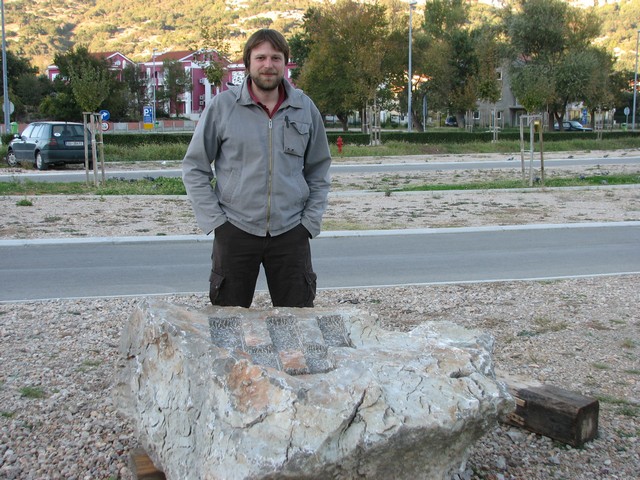
Roko Idžotić with Croatian Glagolitic Ć

Croatian Glagolitic letter Đ (Đerv), carved by Mr. Eduardo Filipović from the city of Rijeka, Croatia. Sponsor of this monument is the town of Đakovo from Croatian North-East.

Roko Idžotić from Osijek carved Croatian Glagoliti Š. The letter enterd from the Glagolitic also into the Cyrillic Script.

Roko Idžotić with Croatian Glagolitic Ć
Please, go to the next page below.
Participants from Czech Republic, Austria, and Croatia, page 2

The stones were brought near the Corinthia Hotel in Baška.


Everything is prepared before the arrival of participants of the Second International Workshop in Baška.
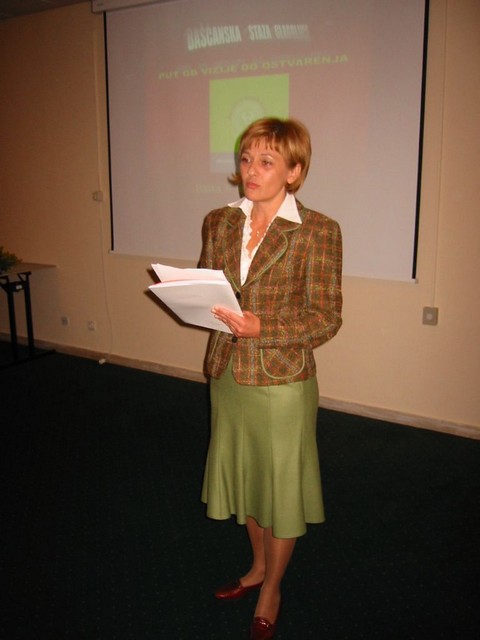

Branka Polonijo, dipl.oecc, president of Sinjali Society, addressing the opening ceremony of the workshop organized in the hall of the Hotel Corinthia in Baška.

From the opening ceremony on the day of arrival of all participants of the workshop: the female klapa choir Volta from the island of Krk.

Vojtěch Živný from Prague, Czech Republic, nicknamed Vojta, carving Croatian Glagolitic letter Č.
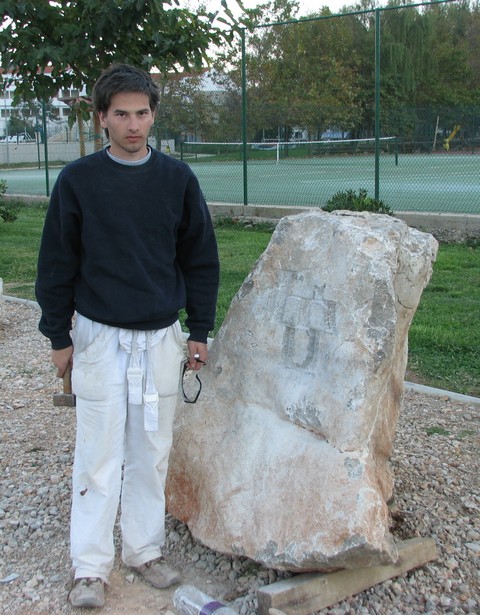

And here its is - Č finished. It is interesting the a famous Czech King Charles IV invited Croatian benedictine glagolitic monks, probably from Zadar, to the city of Prague in 1347, and built the Glagolitic convent of Emaus (or na Slovanech) near the center of Prague. The Emaus convent exists also today. For more details see here.

Vojta carved also Croatian Glagolitic letter F. Note that the origin of F is Greek.
Please, go to the next page below.

Vojta carved also Croatian Glagolitic letter F. Note that the origin of F is Greek.
Please, go to the next page below.
Participants from Czech Republic, Austria, and Croatia, page 3

The monument representing Croatian Glagolitic Đ (Đerv), carved by Eduardo Filipović from Rijeka, and stones with other Glagolitic letters.
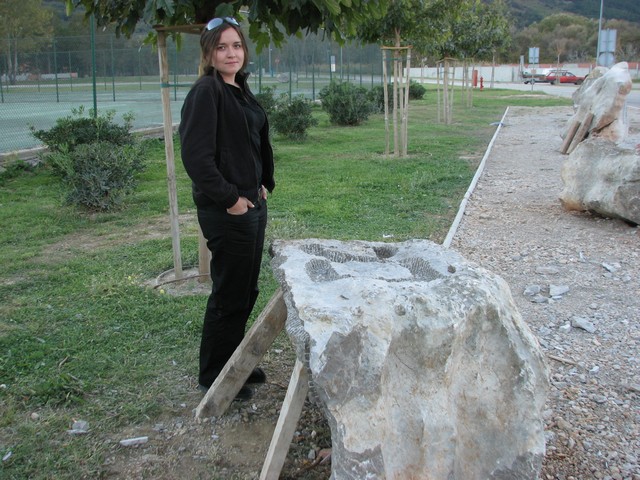
Nina Ollendorf from Graz, Austria, with her Croatian Glagolitic letter I.

Croatian Glagolitic I exhibited in the city of Baška.
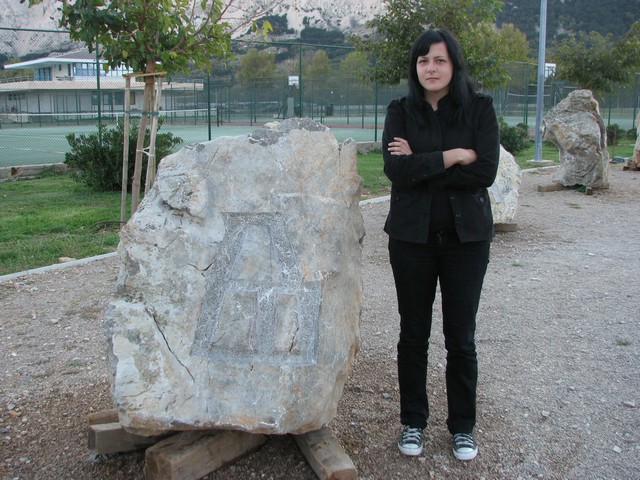
Tina Rade from Split with her Croatian Glagolitic Yat.

Sandro Lorenz from Graz, Austria, with his Croatian Glagolitic Yus.

Vedrana Belanović from Osijek with her Croatian Glagolitic M. As we see, the letter is very close to Latin M.
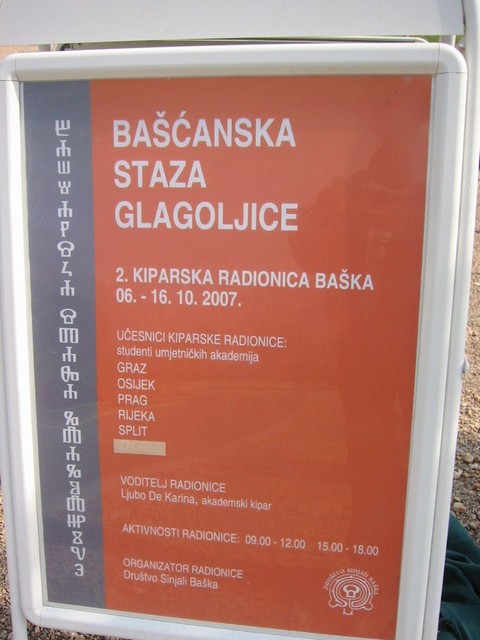

Mr. Jurešić Jr., carver, helps students in raw work.

Erika Šimanić from Rijeka, Croatia, carving Croatian Glagolitic letter Ž.

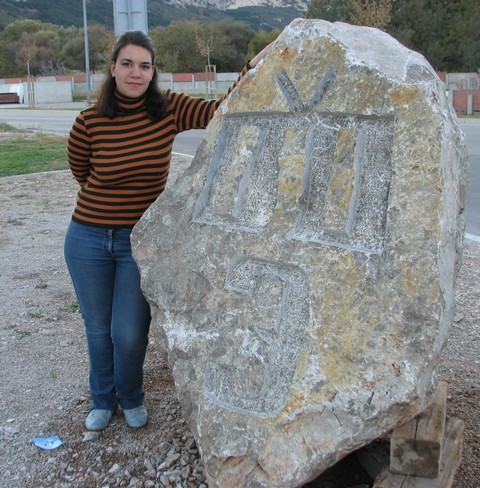
Erika Šimanić with her Croatian Glagolitic letter Ž finished.
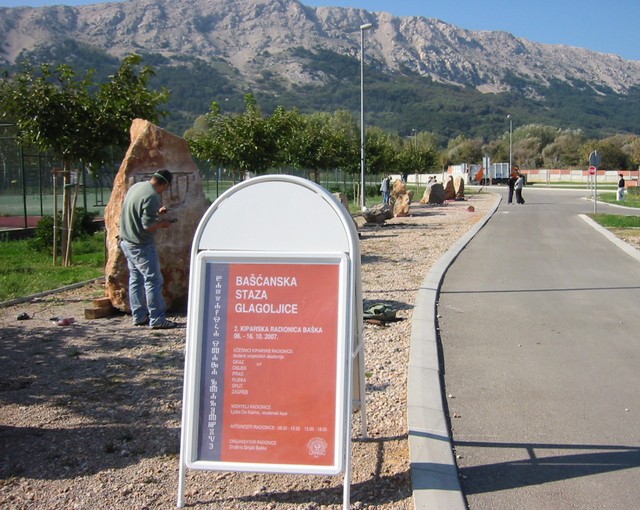

Jana Hoffmannová from Prague, Czech Republic, with her Croatian Glagolitic letter U.
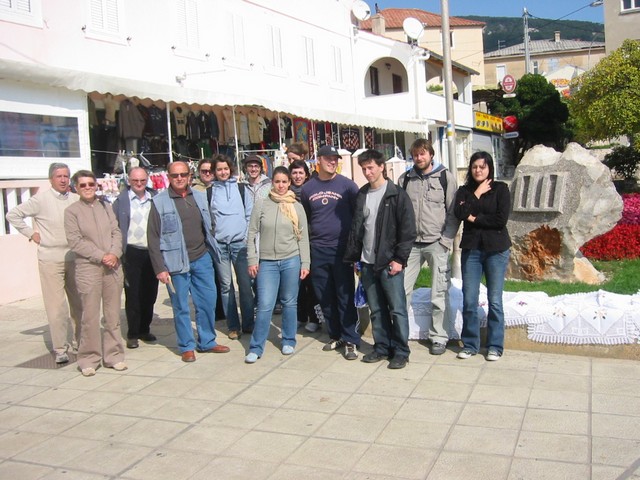
Participants of the workshop in Baška in front of the monument representing Croatian Glagolitic letter V.
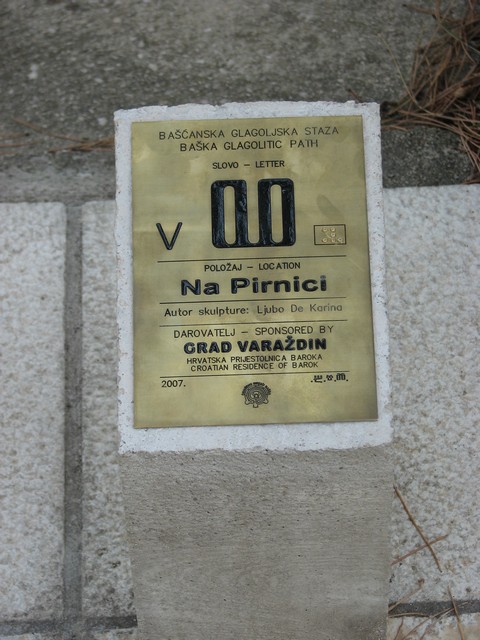
A short description of the monument in Croatian and English, placed near the stone.

Nina Ollendorf from Graz, Austria, with her Croatian Glagolitic letter I.

Croatian Glagolitic I exhibited in the city of Baška.

Tina Rade from Split with her Croatian Glagolitic Yat.

Sandro Lorenz from Graz, Austria, with his Croatian Glagolitic Yus.

Vedrana Belanović from Osijek with her Croatian Glagolitic M. As we see, the letter is very close to Latin M.


Mr. Jurešić Jr., carver, helps students in raw work.

Erika Šimanić from Rijeka, Croatia, carving Croatian Glagolitic letter Ž.


Erika Šimanić with her Croatian Glagolitic letter Ž finished.


Jana Hoffmannová from Prague, Czech Republic, with her Croatian Glagolitic letter U.

Participants of the workshop in Baška in front of the monument representing Croatian Glagolitic letter V.

A short description of the monument in Croatian and English, placed near the stone.
Formated for CROWN by prof.dr. Darko Žubrinić
Distributed by www.Croatia.org . This message is intended for Croatian Associations/Institutions and their Friends in Croatia and in the World. The opinions/articles expressed on this list do not reflect personal opinions of the moderator. If the reader of this message is not the intended recipient, please delete or destroy all copies of this communication and please, let us know!